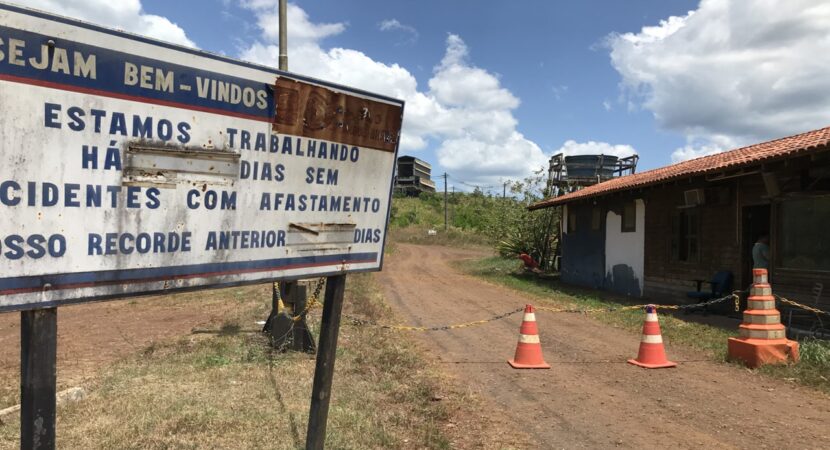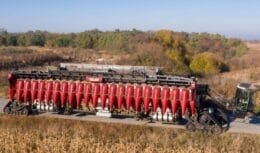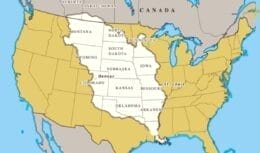
From “economic boom” to a city in misery: sudden end of mining in the Amazon led to economic crisis and unemployed people
Pedra Branca do Amapari located in the middle of the Amazon rainforest, in the state of Amapá, which between 2007 and 2014 experienced an economic boom in mining, suffered a tragic history: the collapse of the port of the mining company Anglo American in 2013, which left six employees dead and interrupted the economic development of the Amazon and the Amazonian people suffer to this day, according to journalists Abinoan Santiago and Dyepeson Martins from the apublica.org portal.
Read also
- Together for the Amazon: Ambev, Coca Cola, Nestlé, Petrobras, WEG and more companies come together to build an oxygen plant
- Subsea 7 opens vacancies in RJ for candidates with no experience for its internship program in the oil and gas industry
- Multinational Actemium in Macaé, started onshore recruitment and selection for many elementary and high school vacancies
The activity, however, was suddenly suspended in 2014, months after the accident. It was the only outlet for mineral production in the Amazon, which made extraction in Pedra Branca unfeasible.
Despite the fact that the accident occurred almost eight years ago, causing economic and social damage, mining in the Amazon has left the victims' families in mourning to this day.
Ore extraction in the Amazon started by Eike Batista and resulted in the death of workers and misery in the region
The extraction of iron ore in Pedra Branca do Amapari began with former billionaire Eike Batista. Despite the audacious forecast of 6,5 million tons of iron ore per year, with a useful life of 20 years, Eike gave up on Amapá and with just one month after the first export, in December 2007, he sold the mine then managed by his company MMX for the British Anglo American for US$ 5,5 billion.
In March 2013, however, part of the mining company's shipping port collapsed into the Amazon River, in Santana, and affected operations. In the same year, the Indian company Zamin Ferrous took over the Anglo venture. The following year, Zamin suspended extraction, leaving employees unemployed. Today, the Indian mining company is in judicial recovery.
Anglo American justified the sale by the fact that “in a global portfolio review in 2012, the mine in Amapá was considered a non-core asset in Brazil”. No representative of Zamin – which accumulated a debt of more than R$ 1 billion with workers, companies and banks – was found by the report. Pública contacted the company's lawyers by phone and email, but there was no response. On the verge of bankruptcy, even the mining company's website went down.
The Public Ministry of Amapá (MP) denounced Anglo and four directors of the company for the deaths of workers and environmental crimes that occurred after the landslide. As explained by prosecutor Adilson Garcia, responsible for the complaint, the MP used Law 9.605 to criminally hold the company responsible for environmental crimes. According to the complaint, the company did not take the necessary measures to avoid the tragedy and Anglo directors had access to studies that showed the need for investments in safety on the pier, due to the instability of the ground caused by another accident in 1993. The complaint was filed in 2020 and is being processed by the 1st Criminal Court of Santana. The process is still in the citation phase, that is, the defendants are being notified about the accusations.
From “economic boom” to a city in misery: sudden end of mining led to economic crisis and unemployed people in the Amazon
After the suspension of activities, Zamin left behind a gigantic structure that even boosted the creation of an “eldorado from Amapa”, veritable ruins in the middle of the jungle. In the place where the company's headquarters operated, there is an environment occupied by weeds, heavy machinery and scrap metal. The entrance gate has been replaced with pieces of wood placed on top of rusty barrels.
Abandonment transformed the routine of the city which, after economic growth driven by mineral activity, resulted in a population increase of almost 300%, jumping from 4 to 13 inhabitants only during the mineral cycle between 2007 and 2013
This reflected directly on the surroundings of the railroad. With nowhere to go and unemployed, residents planted buildings inches from the rail. Others built houses on top of where the train was supposed to pass.
At the time, the municipal government informed that the stoppage of the mining company represented a drop of almost 35% in revenue. A few months later, the situation got even worse with the closure of commercial establishments affected by the financial crisis.
The investment capacity of the city of Pedra Branca do Amapari, before mining, in 2005, was R$ 5 million. It rose to R$67 million in 2012 and dropped to R$47 million the year after the mining company left the city.
In 2019, the Federal Public Ministry (MPF), the State Public Ministry (MPE) da Amazônia and Anglo American signed a Composition of Damages Agreement for the municipalities affected by the tragedy. They should receive R$ 47 million for investments in education, culture, health and infrastructure projects.
by – apublica.org









